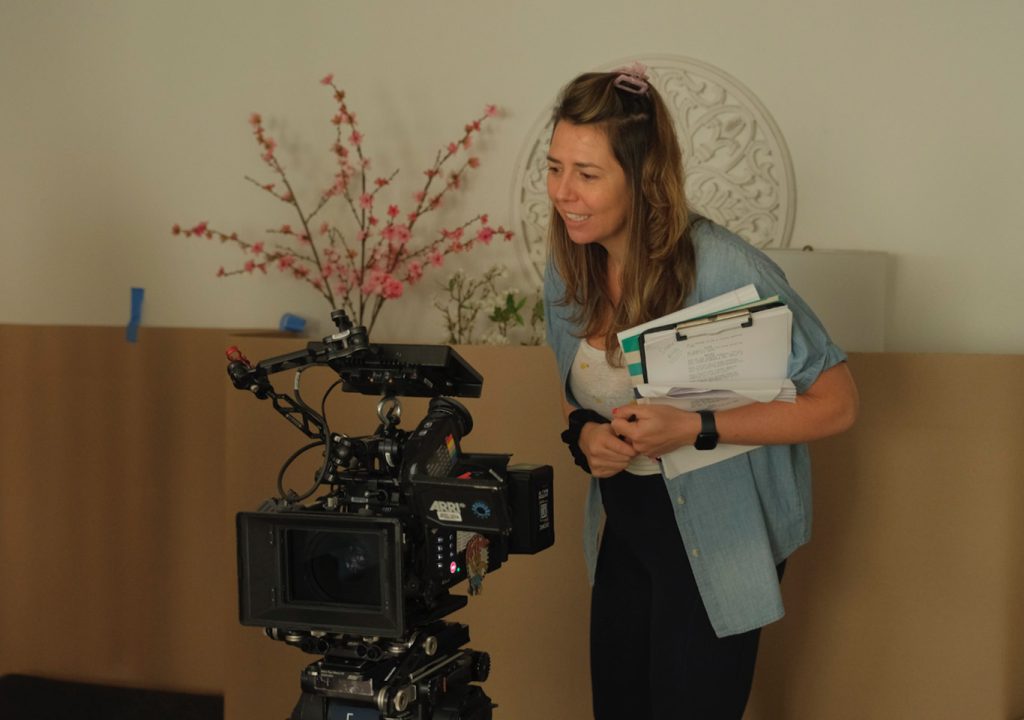The intersection of traditional filmmaking and artificial intelligence is a hot topic, as industry professionals explore the implications of integrating cutting-edge technology within the creative process. Leading the charge in this conversation is Samantha Nisenboim, a former Warner Bros. executive who has transitioned into a creative producer. Through her journey, she advocates for the role of AI not as a replacement for human storytellers, but as a tool that enhances creativity and democratizes filmmaking.
From Studio Executive to Creative Producer
Samantha Nisenboim’s career trajectory is a testament to her passion for storytelling. Starting as an ambitious filmmaker, she navigated her way from film school to prominent positions at Warner Bros. There, she gained invaluable experience working alongside industry heavyweights, including Tom Cruise, and learned the intricacies of producing blockbusters. Yet, despite her prestigious position, she felt increasingly distanced from the creative process.
“I loved being in the fire,” Samantha reflected during our conversation. “As a studio exec, you’re a step removed. I wanted to be on the ground, solving problems, making the movie in real time.” This desire for a more hands-on role propelled her to become a creative producer, where she could immerse herself in the art of filmmaking. Partnering with director Chris McKay, she produced several films, including the critically acclaimed Renfield.
The Awakening of AI in Filmmaking
The year 2023 was a pivotal moment for Nisenboim as industry strikes prompted her to reevaluate her career and the role of technology in storytelling. Initially skeptical of AI, she recognized it as a potential adversary amid the uncertainty of work opportunities. “It only takes a few doomsday headlines, a coffee buzz, and no work on the horizon to start pointing fingers,” she recalled. However, a deeper exploration revealed that AI could aid filmmakers by streamlining processes that were previously cumbersome and inaccessible.
“AI didn’t just speed things up—it made parts of the process that used to be out of reach accessible,” she noted. Rather than envisioning a future dominated by soulless AI-generated content, Samantha advocates for AI as a means to empower creativity. “I’m not trying to make AI films,” she emphasized. “I’m trying to make better films faster, with fewer compromises.”
The Human Element in AI
Despite her enthusiasm for integrating AI into filmmaking, Nisenboim firmly believes in preserving the human essence of creativity. “The idea that AI can replace humans is wrong and frankly, dangerous,” she stated. “Creativity isn’t just inputs and outputs. It’s chemistry, conflict, chaos. That doesn’t come from code.” She likens this evolution in filmmaking to the transition from analog to digital cameras, which has reduced production risk and expanded creative opportunities.
The Future of Storytelling
Nisenboim is particularly hopeful about AI’s capacity to democratize filmmaking, bringing advanced tools and techniques within reach of more creators. “We’re getting closer to new technology that can keep volumetric lighting consistent,” she said, underscoring the advancements being made in visual storytelling. However, she also cautions against hyper-personalized content that could further alienate audiences from shared experiences, emphasizing that storytelling’s power lies in its ability to connect people.
A Call to Action for Creatives
When approaching AI in filmmaking, Nisenboim encourages creators to lead with storytelling. “Let the filmmaker lead as opposed to the technology,” she advised. “Sit down with a director and ask, ‘What do you want to make?’ Then figure out how to use AI alongside your other filmmaking resources.” This philosophy highlights the importance of collaboration between creatives and technology.
The Importance of Technology Partners
In an industry where technical capabilities often shape creativity, Nisenboim stresses the significance of forming strong partnerships with technology providers. As filmmakers experiment with AI-enhanced workflows and new production models, having reliable tech partners is paramount. “Much like I’m asking the people building new tech to meet filmmakers where we are, I’ve been having the same conversation with my colleagues at Dell,” she explained. “Having a tech partner who understands both the creative and technical sides is crucial.”
For instance, Nisenboim relies on tools like the Dell Pro Max laptop and PowerScale storage solutions to support her filmmaking initiatives.
Final Thoughts
As we concluded our conversation, Samantha Nisenboim’s insights resonated with a profound understanding of the delicate balance between technology and artistry. It is evident that as the filmmaking landscape continues to evolve, the heart of storytelling remains anchored in the human experience. “Sometimes the answer isn’t another prompt. Sometimes the answer is… sleep on it,” she said, encapsulating the need for patience and introspection in a rapidly changing world.
Samantha Nisenboim stands as a beacon for filmmakers navigating the complexities of AI, reminding us that while technology can enhance our capabilities, the most compelling stories will always stem from genuine human connection and creativity.

